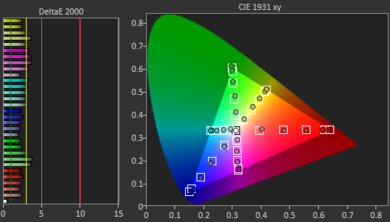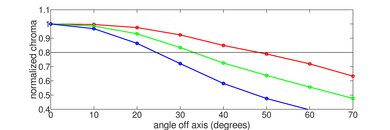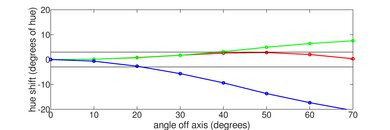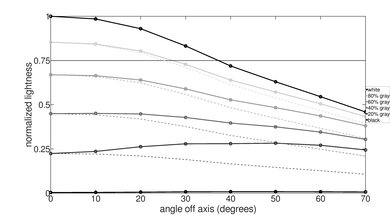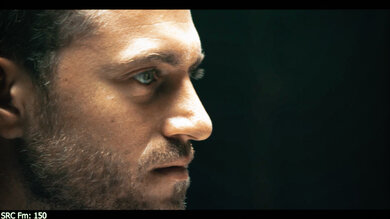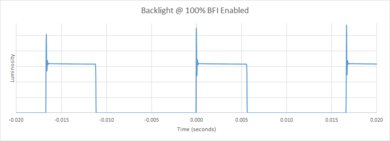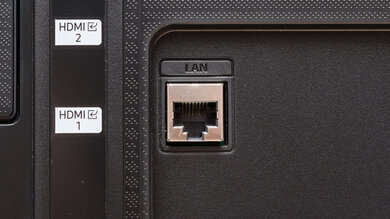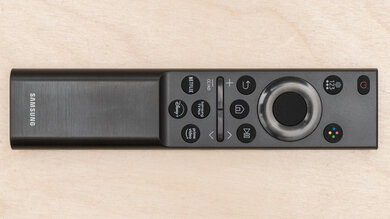The Samsung CU7000 is one of the entry-level models in Samsung's 2023 lineup, replacing the Samsung AU7000 in North America. It's part of Samsung's Crystal UHD series of TVs, sitting below the Samsung CU8000. It competes with other entry-level models like the Sony X75K, the Hisense U6/U6H, and the TCL 4 Series. It's a very basic model that lacks features like variable refresh rate (VRR) and HDMI 2.1 bandwidth. It uses Samsung's Crystal Processor 4K, first introduced in 2020 and designed to provide powerful 4k upscaling. It runs a simplified version of Samsung's 2023 Tizen OS interface, which offers most of the features of more advanced models. The CU7000 comes with a simple battery-powered remote, which lacks the voice support and solar charging of the CU8000 remote.
Our Verdict
The Samsung CU7000 is okay overall. It's a decent TV for gaming due to its incredibly low input lag and good response time, so you get a responsive gaming experience with minimal blur behind fast movement on screen. Unfortunately, even though it has satisfactory reflection handling, it doesn't get bright enough to overcome glare in a bright room. Inversely, its contrast isn't quite good enough to impress in darker rooms, and its low HDR peak brightness and narrow color gamut lead to an unimpactful HDR presentation.
Decent for gaming due to its fast response time and low input lag.
- Lacks a local dimming feature.
Doesn't get very bright in HDR or SDR.
The Samsung CU7000 is not bad for watching TV shows. It has satisfactory reflection handling, but due to its mediocre SDR peak brightness, it can't overcome glare in a bright room. The TV has an inadequate viewing angle with colors that shift quickly as you move off-center, so it's not a good choice for watching shows in a group, as people sitting to the sides of the screen see a degraded image. It does an alright job upscaling lower-resolution content, so it's a decent choice for watching older shows on DVD or cable boxes.
- Poor low-quality content smoothing.
Doesn't get very bright in HDR or SDR.
- Narrow viewing angle.
The Samsung CU7000 is alright for watching sports. The TV has satisfactory reflection handling but can't overcome glare in a bright room due to its mediocre SDR peak brightness. It has a good response time, so there's very little blur behind quick-moving players. The TV also does an alright job at upscaling lower-resolution content, which is important since most sports are still shown in 720p. Unfortunately, it has a narrow viewing angle that makes it inadequate for watching the game in a group setting since anyone watching from the sides of the screen sees a degraded image.
Good response time.
Doesn't get very bright in HDR or SDR.
- Narrow viewing angle.
The Samsung CU7000 is decent for gaming. It has incredibly low input lag, so there's no delay between the inputs on your controller and the action on the screen. It also has a good response time, so there's minimal blur behind quick movements on screen. The TV supports Auto Low Latency Mode (ALLM) that switches your TV into Game Mode when launching a game, but it doesn't support any advanced gaming features like variable refresh rate and is limited to HDMI 2.0 bandwidth.
Good response time.
Very low input lag.
Doesn't get very bright in HDR or SDR.
- Limited to 60Hz and has no VRR support.
The Samsung CU7000 is alright for watching movies in a dark room. It has an adequate contrast ratio and great black uniformity that allows for deep blacks in dark scenes, but since it lacks a local dimming feature, blacks are washed out anytime there are brighter highlights on screen. The TV has poor HDR peak brightness and doesn't support a wide color gamut, so highlights don't stand out, and colors aren't as vibrant and lifelike as they should be. The TV also has poor low-quality content smoothing, so lower-bitrate movies from streaming services have noticeable macro-blocking.
- Removes judder from 24p sources.
- Poor low-quality content smoothing.
- Lacks a local dimming feature.
Doesn't get very bright in HDR or SDR.
- Narrow color gamut.
- Terrible pre-calibration color accuracy.
- No DTS audio support.
The Samsung CU7000 is satisfactory for HDR gaming, even if HDR adds little due to the TV's poor HDR peak brightness, narrow color gamut, and lack of local dimming. Still, the TV has incredibly low input lag, so there's no delay between the inputs on your controller and the actions on the screen. It also has a good response time, so there's minimal blur with quick-moving objects, but due to the lack of VRR, you'll have screen tearing. It also lacks HDMI 2.1 bandwidth and is limited to 60Hz, so it's not a good pairing with modern gaming consoles.
Good response time.
Very low input lag.
- Lacks a local dimming feature.
Doesn't get very bright in HDR or SDR.
- Narrow color gamut.
- Limited to 60Hz and has no VRR support.
The Samsung CU7000 is decent for use as a PC monitor. Its incredibly low input lag gives a responsive desktop experience, making your mouse movements smooth. Its good response time also means there's minimal blur behind quick cursor movements. Unfortunately, even though the TV has satisfactory reflection handling, it doesn't get bright enough to overcome glare in a bright room. Plus, the TV has a narrow viewing angle, so the image looks washed out at the sides if you sit too close to the screen. It displays chroma 4:4:4 properly, which is essential for clear text from a PC, but since it uses a BGR subpixel layout, there are still some text clarity issues that affect readability.
- Displays chroma 4:4:4 subsampling.
Good response time.
Very low input lag.
Doesn't get very bright in HDR or SDR.
- Narrow viewing angle.
Changelog
-
Updated Nov 18, 2024:
We rewrote sections of the review for clarity to ensure it's up to date.
-
Updated Nov 04, 2024:
We mentioned the newly-reviewed Samsung DU6900 in the SDR Brightness section of this review.
- Updated Apr 11, 2024: Mentioned the newly-reviewed Samsung DU8000 in the Black Uniformity section of this review.
- Updated Jan 15, 2024: We've updated the text in the review to reflect our latest test methodology.
Check Price
Differences Between Sizes And Variants
We bought and tested the 65-inch Samsung CU7000, and these results are also valid for the 43-inch, 50-inch, 55-inch, 58-inch, 70-inch, 75-inch, and 85-inch models. The Samsung CU7000D is a variant sold at Costco and Sam's Club but is otherwise identical to the CU7000. Note that the last four letters in the model number (FXZA in this case) vary between retailers and individual regions, but there's no difference in performance.
| Size | US Model | Short Model Code |
|---|---|---|
| 43" | UN43CU7000FXZA | UN43CU7000 |
| 50" | UN50CU7000FXZA | UN50CU7000 |
| 55" | UN55CU7000FXZA | UN55CU7000 |
| 58" | UN58CU7000FXZA | UN58CU7000 |
| 65" | UN65CU7000FXZA | UN65CU7000 |
| 70" | UN70CU7000FXZA | UN70CU7000 |
| 75" | UN75CU7000FXZA | UN75CU7000 |
| 85" | UN85CU7000FXZA | UN85CU7000 |
Our unit was manufactured in March 2023, as you can see on the label.
Popular TV Comparisons
The Samsung CU7000 is an entry-level budget TV with decent performance. It's comparable to 2020's Samsung TU7000, with each having slight advantages over the other. It's a very basic TV with limited picture quality and few extra features. There are better budget models available from other brands, like the cheaper Hisense U6/U6H, the TCL 4 Series/S455 2022, and the TCL 5 Series/S555 2022 QLED. The Hisense U7H and the Hisense U8/U8H both outperform the Samsung CU7000 and are typically cheaper. Overall, it's probably not worth your money.
For other options, check out our recommendations for the best TVs, the best budget TVs, and the best 4k gaming TVs.
The Samsung DU7200 and Samsung CU7000/CU7000D are closely matched, with the older CU7000 having a slight edge when it comes to image quality, but the DU7200 has more features. The DU7200 is a bit brighter in HDR and SDR, but this is hardly noticeable, while the CU7000 has noticeably deeper contrast. Still, the CU7000 has slightly better reflection handling, giving it the edge in brighter rooms. The DU7200 is the most accurate TV of the two out-of-the-box and has a basic VRR feature in the 48-60Hz range, making it a bit more interesting for gamers. Ultimately, these two TVs are similar enough that you should get the cheapest one you can find.
The Samsung CU7000 and Samsung CU8000 are surprisingly comparable TVs, each having particular strengths. The CU8000 has a wider color gamut and slightly higher peak brightness, making it more pleasant to look at. It also has a more premium, slimmer design. However, it's a particularly slow TV; its response time is poor, which makes it ill-suited for watching sports or for playing fast-moving games, but it helps with watching movies as a slow response time reduces perceived stutter. One of the CU7000's primary strengths is its fast response time, especially in bright scene transitions, making it suited to sports and fast games. Ultimately, the CU7000 is likely cheaper and of particular interest to those wanting a cheaper TV to play games on and watch sports, while the CU8000 has a premium look and outputs more impressive images due to its wider color gamut and slightly higher peak brightness.
The Samsung CU7000/CU7000D and Samsung TU7000 are very similar TVs. The TU7000 has better contrast and color accuracy, while the CU7000 has slightly better peak brightness in both SDR and HDR, much better PQ EOTF tracking, and a faster response time. The CU7000's response time makes it the better choice for fast-moving action in games and sports; however, the slower response time of the TU7000 makes it better suited for watching movies as it has less stutter.
The Sony X80K/X80CK is better than the Samsung CU7000/CU7000D in most ways. The Sony gets brighter in HDR, supports a wider color gamut, and has better color volume, so colors are more vibrant and lifelike, and highlights pop a lot more than on the Samsung. The Sony also gets brighter in SDR, so it overcomes glare better in a bright room. The Sony is better for watching shows or sports as a group because of its much wider viewing angle. However, the Samsung has much better contrast and black uniformity, so it's better for a dark room as blacks are much deeper than the Sony.

We buy and test dozens of TVs yearly, taking an objective, data-driven approach to deliver results you can trust. Our testing process is complex, with hundreds of individual tests that take over a week to complete. Most of our tests are done with specially designed test patterns that mimic real content, but we also use the same sources you have at home to ensure our results match the real-world experience. We use two main tools for our testing: a Colorimetry Research CR-100 colorimeter and a CR-250 spectroradiometer.
Test Results

The TV looks good for a budget model. It's thicker than the Samsung CU8000 but has thin bezels, and its textured plastic feels good to the touch. Overall, this doesn't feel like a budget model.
As part of our two-year test, which has so far subjected 100 TVs to over 10,000 hours of accelerated testing, we found that edge-lit TVs like this one have significant durability issues. These issues range from warped reflector sheets and cracked light guide plates to completely burnt-out LEDs. You can read the full results of our investigation here.
The feet on the Samsung 65CU7000 are plastic and feel okay. You don't need to screw them in; you just slide the feet in place, which makes for a quick and easy install process. The distance from the table to the screen is 3.3 inches, which is high enough to fit most soundbars. The footprint of the 65-inch stand sits at 46.5" x 11.1".
Like many other Samsung models, the back of the Samsung 65CU7000D is made of plastic and textured with etched horizontal lines. The TV comes with a clip that you can install on either foot to help with cable management. Unlike the Samsung CU8000, all three HDMI ports are found within a cutout on the back. A mounting arm is recommended, as the inputs are otherwise hard to reach if the TV is wall-mounted.
The Samsung UN65CU7000FXZA has decent build quality. It's made of plastic, feels good to the touch, and looks good. It's thicker than the Samsung CU8000 but doesn't flex nearly as much when you shake the panel, which is likely helped by the added thickness, so it feels sturdier. The feet are made of plastic and feel cheap, but they hold the TV well.
The TV's contrast is adequate, and blacks look great in dark scenes. Unfortunately, due to the lack of local dimming, dark scenes look washed out when bright highlights are present. For something with better contrast, look up the Roku Plus Series QLED.
This TV doesn't have a local dimming feature, so it can't adjust the backlight level of individual zones to brighten up highlights without impacting the rest of the scene. The lack of dimming zones means that there are no distracting flicker or brightness changes as bright highlights move between zones.
The TV's HDR brightness is poor. Bright highlights don't stand out, and the entire screen dims when highlights are shown in very small sections of the screen. Overall, this TV doesn't provide a good HDR experience.
These measurements are after calibrating the HDR white point with the following settings:
- HDR Picture Mode: Movie (HDR)
- Brightness: Max
- Contrast: Max
- Color Tone: Warm 2
This TV is slightly brighter in HDR when set to Game Mode, but its overall HDR brightness is still disappointing. The screen still dims significantly when bright highlights are shown in small sections of the image.
These measurements are after calibrating the HDR white point with the following settings:
- Game Mode: On
- Brightness: Max
- Contrast: Max
- Color Tone: Warm 2
- Color Gamut: Auto
- HDR Tone Mapping: Static
The TV has remarkable PQ EOTF tracking. Its near-blacks are raised a bit, but after that, the TV follows the PQ EOTF curve almost perfectly. This means that the brightness of HDR content is displayed almost exactly as the content creator intended up until the max brightness of the panel. The TV slightly rolls off with all mastered content to preserve some fine detail in bright highlights.
The TV's SDR brightness is mediocre. It's not bright enough to overcome glare in a well-lit room and is better suited for moderately lit or dark rooms. If you need a TV with much better SDR peak brightness, check out the Samsung Q80C or the Samsung DU6900.
These measurements are after calibration with the following settings:
- Picture Mode: Movie
- Backlight: Max
- Color Tone: Warm 2
- Gamma: 2.2
The Samsung Crystal UHD CU7000 has an okay color gamut. It doesn't support a wide color gamut, but it has good coverage of the DCI-P3 color space, which is the most common color space for HDR content. Unfortunately, its colors are generally undersaturated, and its tone mapping isn't accurate. The TV's coverage of the wider Rec. 2020 color space is inadequate, with accuracy errors throughout. Almost all colors are significantly off the mark, especially greens, purples, and reds.
The TV's color volume is poor. The TV struggles with displaying any bright colors, particularly medium reds and blues. It performs a bit better with darker colors, but it's still underwhelming due to the TV's lack of local dimming.
The TV has sub-par pre-calibration accuracy. Its gamma is way under the target of 2.2, so it's significantly over-brightened in all scenes. Its color accuracy is poor throughout, with most color shades deviating from reference. The TV's white balance is also poor, as all shades of gray have too much green, red, and blue, leading to a slightly cold color temperature overall. The Samsung TU690T is much more accurate out of the box.
The TV's post-calibration accuracy is great. White balance accuracy is closer to reference, and its color temperature is nearly perfect. Unfortunately, the TV is hard to calibrate, and its color accuracy is still slightly off for every color except blues and reds.
Check out our full calibration settings.
The TV has great black uniformity. There's some noticeable clouding throughout, but the screen is otherwise uniform, and the clouding won't be distracting in dark scenes. Sadly, there's no local dimming feature to reduce the screen's cloudiness. If you want a similar Samsung TV with better black uniformity, check out the Samsung DU8000.
The TV has a sub-par viewing angle. The colors quickly shift when you move off-center, so it's not ideal for a wide seating area or if you like to move around your room while watching TV. If you want a TV with a better viewing angle, check out the LG UR9000 or the Sony X77L/X77CL.
The TV's HDR gradient handling is alright, but there's significant banding in dark grays and noticeable banding in greens, dark reds, and dark blues.
The TV has poor low-quality content smoothing. Details are preserved well, but there's very little smoothing done, so there's still noticeable macro-blocking present. If you want a similar budget model with better processing, check out the Samsung CU8000 or the LG UR8000.
The TV uses a BGR (Blue-Green-Red) subpixel layout instead of the traditional RGB layout. For most content, this isn't a problem, but when using this TV as a PC monitor, this can impact text clarity.
This TV has a good response time. It has poor dark screen transitions, which results in ghosting in dark scenes. There's some overshoot in quick transitions from dark scenes to bright scenes, but it's not too distracting. The rest of the transitions are great, with very minimal ghosting or overshoot.
The TV uses pulse width modulation (PWM) to dim its backlight, resulting in flicker that can bother users who are sensitive to it. Unlike the Samsung CU8000, the Samsung CU7000 4k TV doesn't flicker in Movie Mode or all other picture modes except for Game Mode when the brightness is set to 20 or above. In Game Mode, the TV flickers at 120Hz with any brightness level.
The TV supports backlight strobing, more commonly known as black frame insertion (BFI). While it's supposed to improve the appearance of motion by reducing the amount of persistence blur, the strobing on this TV is poorly timed and introduces noticeable crosstalk. When you enable Game Mode, the feature introduces motion duplication, which isn't optimal. Finally, backlight strobing lowers the TV's brightness, which can annoy some users.
Like the Samsung CU8000, the Samsung CU7000 Crystal UHD interpolates lower-frame rate content up to 60 fps. It looks okay in slower scenes, but when the action ramps up, it leads to artifacting and haloing.
Like most TVs on the market, there's stutter with 24 fps content, but it's decent due to the TV's relatively slow response time.
The TV removes judder from native 24p signals, like DVDs or Blu-rays, as well as from native apps. However, it doesn't remove judder from 60i or 60p sources, so movies played from satellite/cable boxes are not judder-free.
This TV doesn't support any variable refresh rate technologies.
The TV has incredibly low input lag. While its input lag is lowest in Game Mode, it's also low outside of it, making it more similar to 2021's Samsung AU8000 than the Samsung CU8000. Like other Samsung TVs, to have low input lag while transmitting a chroma 4:4:4 signal, you need to put the input to 'PC' and enable Game Mode.
The Samsung 65 CU7000 supports all common resolutions at 60Hz, and unlike the Samsung CU8000, it supports 1440p @ 60Hz. The TV can also display proper chroma 4:4:4, which is important for text clarity when using this TV as a PC monitor.
The TV has limited capabilities with the PS5. It has a 60Hz panel, so it only supports 4k @ 60Hz on a PS5. It'll automatically switch to Game Mode when the TV detects a game console as its input device, giving you the lowest possible input lag for games.
The TV has limited capabilities with the Xbox Series X|S. Since it's a 60Hz TV, it only supports 4k @ 60Hz on the Xbox consoles. It'll automatically switch to Game Mode when the TV detects a game console as its input device, giving you the lowest possible input lag for games.
The Samsung CU7000D 65 has eARC and supports passthrough of all Dolby formats, which is great, but like other Samsung TVs, it can't passthrough any DTS formats, which is disappointing for fans of DVDs and Blu-rays, as they commonly use DTS as their audio format.
The TV's frequency response is middling. It has a very low maximum volume; this is terrible for users who want to listen to loud audio from their TV. The TV sounds worse as you increase the volume, which isn't great considering that you'll likely raise the volume on this relatively quiet TV. The TV also doesn't produce much bass.
The TV's distortion performance is mediocre. There's a fair amount of distortion both at moderate listening levels and at max volume.
Much like the Samsung CU8000, the Samsung CU7000 65 comes with the 2023 version of Samsung's proprietary Tizen OS but with a reduced feature set. In particular, this includes some reduced animations to make the OS run smoothly on this lower-end TV. The TV supports MultiView, which allows you to display multiple sources simultaneously.
Like most TVs, there are ads on the home screen, and you can't disable them.
The Samsung UHD CU7000 has a good remote, which is nearly identical to the one used for 2021's Samsung AU8000. Unlike the Samsung CU8000's remote, this one requires batteries and has no voice control options, but it still has buttons for popular streaming services.

























